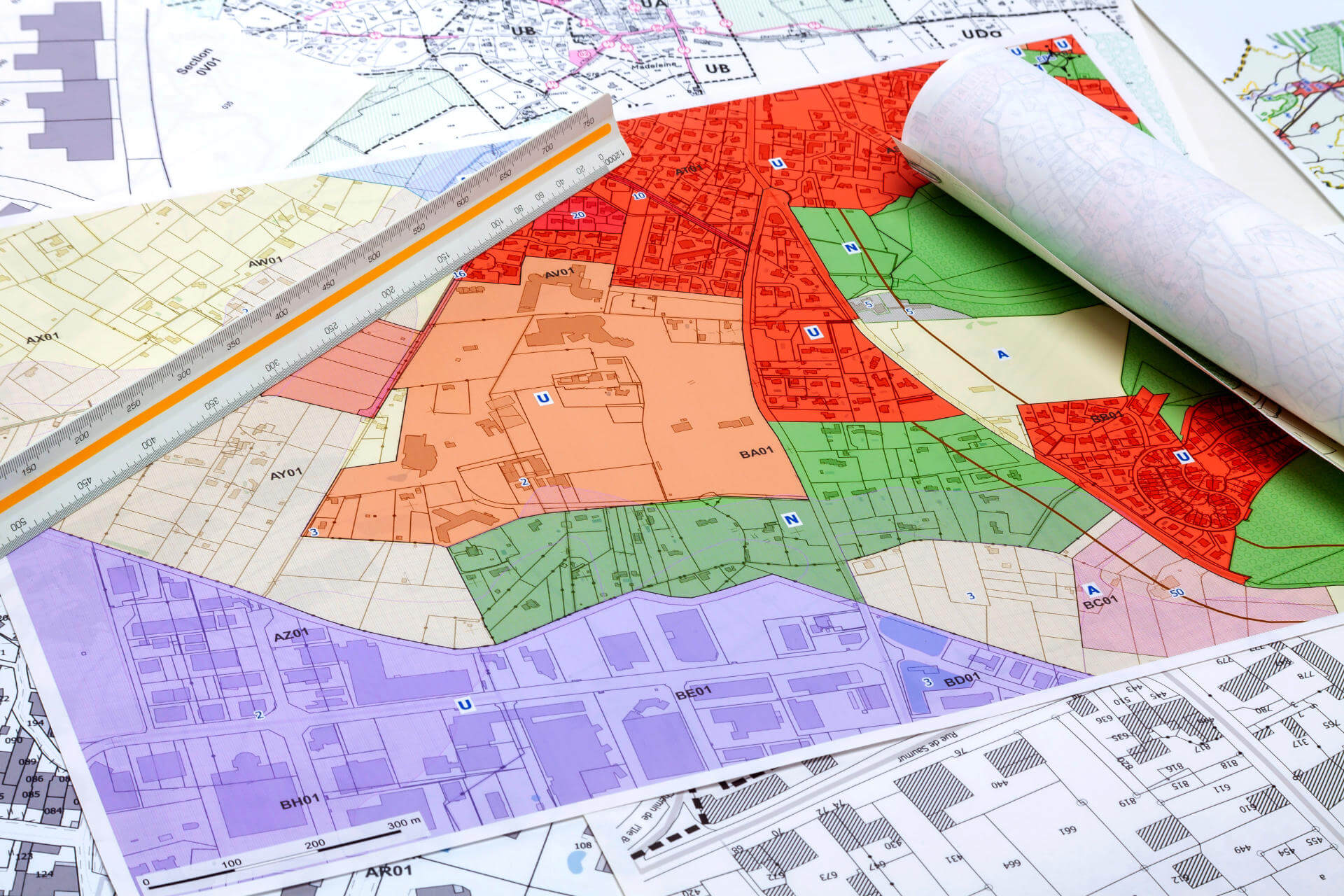Sometimes, the most difficult aspects of a development are access to the land and whether any utilities (eg drainage etc) already serve it. A site that already benefits from both access and drainage is very attractive, but are there any points you need to consider?
By way of an example, the development site shown on the below plan has become available to acquire. The site is currently scrubland and sits alongside a residential plot, owned by Owner A and upon which sits Owner A’s bungalow.

The development site and Owner A’s land are both served by a narrow, single track access road which runs from the public highway. Both plots benefit from a shared but express right of way (in common with all others having the like right) over the access road. The two plots also share drainage by way of a public sewer which runs alongside the access road and serves Owner A’s land.
The owner of the development plot currently uses the access road on foot and by vehicle to occasionally access the development for maintenance purposes.
So, what do you need to bear in mind before proceeding?
Given its excellent location, you expect the new development to attract a lot of custom, significantly increasing the amount of traffic (both of motorised vehicles and pedestrians) using the access road. Is there a point where the use of such an access road (which previously led to undeveloped land and Owner A’s cottage) increases to the extent where the use is excessive and should be prevented?
After completion of your development, your development and Owner A’s cottage will both connect into the public sewer currently serving both parcels. Does the associated increased use of the sewer constitute excessive use?
The court has considered excessive use in two cases, Merlin Real Estate Ltd v Balaam and another [2024] PLSCS 88 (Merlin) and McAdams Homes Ltd v Robinson [2004] EWCA Civ 214 (McAdams).
The Merlin Real Estate Case
In Merlin, the court was asked to consider whether, the increased use of a track which currently served 27 homes but which, following development, would be used in connection with 10 further homes, would be considered excessive and should, therefore, be prevented.
The court reiterated the legal position that, to amount to actionable excessive use of an easement, the use would need to be so intensive as to amount to an unreasonable interference of the servient owner’s rights (in our case Owner A) to exercise the same easement and that the owner of the servient land would need to produce comprehensive evidence of actual interference.
Each case will turn on its specific facts. In Merlin, the defendant was not able to show the required level of unreasonable actual interference and the developer was successful, obtaining a declaration from the court that it’s proposed development could proceed.
The McAdams Bakery Case
In McAdams, a bakery which shared drainage rights with the neighbouring residential property was sold and two homes built in its place. The owner of the cottage blocked the drainage pipe, claiming that the use of the drainage by the two new homes constructed on the bakery site would be excessive. The developer sued the cottage owner for the cost of laying a new drainage pipe to serve the homes.
In considering whether the developer’s use of the pipe was excessive, the court summarised the principles to be applied when dealing with implied and prescriptive easements as follows:
- Does the proposed development represent a ‘radical change in character’ or a ‘change in the identity of the site’ as opposed to a mere change or intensification of use; and
- Would the use of the site as redeveloped result in a substantial increase or alteration of the burden on the servient land.
In McAdams the court decided that the use of the drainage right following the building of the new homes was, in fact, excessive and that the above two limbs were satisfied.
The McAdams decision was affirmed by the High Court in Stanning v Baldwin [2019] EWHC (Ch) (29 May 2019) where it had found that use of a track which previously served one residential unit to access four units was not excessive, but merely an intensification of use.
Other examples include:
- A right of way at all times and for all purposes with or without animals and vehicles to access a yard could be used by the dominant owner’s construction vehicles and for access to two new build houses (Bucknell v Alchemy Estate (Holywell) Ltd)
- The demolishing of two houses and subsequent development of a three-story block of flats, bungalow and seven garages which would all use the existing right of way was not excessive use (Giles v County Building Constructors)
- The use of a private right of way to access a single dwelling house was not affected when the house become a hotel (White v Grand Hotel (Eastbourne) Ltd)
- A right of way used previously used for agricultural purposes to access a caravan site built on the dominant land was considered to be excessive (Jelbert v Davis)
It would be detrimental for your development if your future use of either the access road and/or the drainage were found to be excessive. Therefore, it is important to thoroughly investigate any such issues at an early stage.
As is clear from the cases explored in this article, each case will turn on its specific facts and that evidence alleging excessive use will need to be both robust and comprehensive.
Investigation can help to rule out any such issues at an early stage.
If you are considering acquiring a site for development and you are concerned that the above points may apply, contact a member of our team and we will be delighted to assist.



